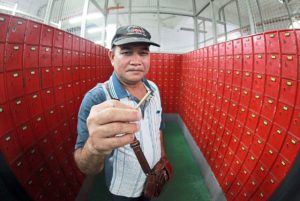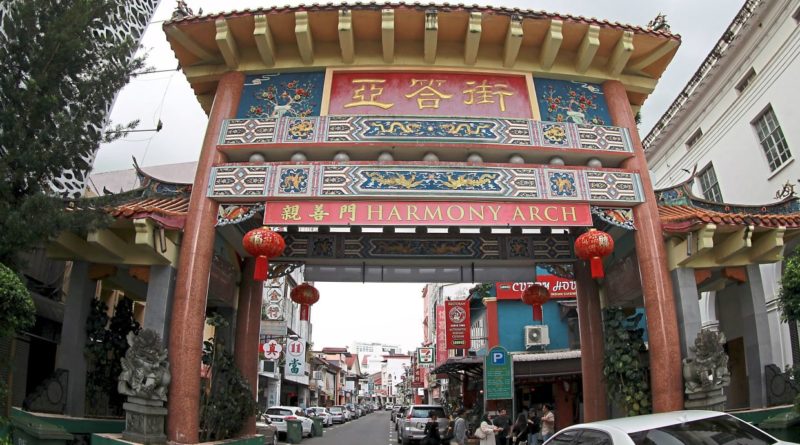FEATURES | Kuching Old Bazaar or Chinatown- A portrait of the past
Discover the timeless allure of Kuching’s Old Bazaar, where history and modern vibrancy weave through its ancient streets
.
.

(ANN/THE STAR) – Nestled in the vibrant heart of Kuching, Sarawak, lies the historic Chinatown, known to many as the Kuching Old Bazaar.
This 200-year-old enclave stands as a vibrant testament to the rich tapestry of the past, captivating visitors with its enduring stories and timeless allure.
The Old Bazaar stretches across several streets, including Carpenter Street, Ewe Hai Street, Bishopsgate Street, and Upper China Street.
This area is a bustling hub, home to more than 200 traditional shophouses. These historic alleys brim with life, housing a variety of traditional enterprises that continue to flourish to this day.
In the early 20th century, many Chinese immigrants arrived in Sarawak, seeking opportunities as laborers, coolies, carpenters, and even frame makers.
Carpenter Street, in particular, earned its name due to the prominence of carpentry, a highly regarded craft at the time.
However, as the cost of wood surged, the demand for custom-made items like furniture dwindled, giving way to mass-produced alternatives. This shift forced many carpenters to adapt, diversifying their skills to sustain their livelihoods.

“People were unwilling to toil long hours, and the price of wood was also increasing,” says Kelvin Lu, 26, a local tour guide who took us on a heritage trail in Kuching during a media trip organised by the Sarawak Tourism Board recently.
Standing at the junction of Wayang Street and Ewe Hai Street is the Hong San Si Temple, which is managed by the Kuching Hokkien Association.
This popular temple is believed to have been around for more than 150 years. The facade embodies a unique form of religious architecture and has beautifully sculpted pillars.
Right across from the worship house is a rather unassuming traditional theatre, and surprisingly, it is still functioning. Performances are usually held on special occasions like the Hungry Ghost Festival and Mid-Autumn Festival.

“The shophouses along Ewe Hai Street were built by Sarawak’s first kapitan, Ong Ewe Hai,” Lu says.
As we journeyed on, we caught a whiff of the enticing aroma of coffee that stopped us in our tracks. Coffee beans in Kuching are locally sourced and roasted daily, too.
Further down the road, one can find colourful murals depicting scenes of the past, like wooden clogs shops and the trading of local products.
“Wooden clogs were versatile footwear back then due to its anti-slip and anti-humidity features. It was popular among hawkers at the wet markets,” Lu explains, adding the once-thriving interest in making wooden clogs dwindled when rubber plantation came into the market in the 1980s and rubber slippers or thongs were introduced.
Meanwhile, in the quieter pocket of Bishopsgate Street, a whimsical 103-year-old tinsmith shop – Ho Nyen Foh – still thrives.
Presently, the shop is helmed by the third generation of the founder. Unfortunately, according to its proprietor, the long-standing profession may soon come to an end due to the lack of interest in preserving the trade among today’s generation.
Other traditional businesses dominating the scene at the Old Bazaar are Yeck Sung Frame Makers, a generational craft shop and the only framing shop in Chinatown, watch shops (another traditional craft handed down through generations), and an old-school medicine store.
You can take a break from your walking tour with a cup of “opium” coffee at Hiap Yak Tea Shop at Kai Joo Lane. But do not worry, you won’t get high on this beverage, as it is merely black coffee served with a pat of butter.
The owner, Tan, said the unique brew was “inspired” by opium smokers who used to visit the shop and drink its thick coffee with butter.
Stroll along Jalan Tun Haji Openg to see the expansive colonial building that currently houses Kuching’s General Post Office. Constructed in 1931, the imposing structure that bears neoclassical style and Corinthian columns are a stark contrast to Kuching’s quaint surroundings.
“Its remarkable architecture draws tourists’ attention,” Lu shares.
We took a mini tour inside the post office, where we were stunned by the 2,000 red post office boxes (also known as PO Boxes) in the building. Lu says that some locals, especially those living on the outskirts and hard-to-reach areas, would still rent the mailboxes to deliver and retrieve letters.

Greeting visitors at India Street is “The Early Merces”, a large mural featuring two textile traders, Wee Aik Oh and Sayed Ahmad. The passionate duo started textile trading in Sarawak in the 1930s.
“Textile business was operated mainly by the Chinese and Indians at this street. The painting aims to celebrate Sarawak’s rich textile heritage in the old quarter of the city,” Lu says.
Two neighbouring streets that you can also explore are Opium Street and Gambir Street, adjacent to the Sarawak River. Gambir is a plant extract, traditionally used to dye leather. Today, gambir is sold as a remedy to soothe toothaches.
Meanwhile, the trading of opium used to be legal during British rule in Sarawak.
One fascinating gem here is the state’s oldest Indian Mosque, or Masjid Bandar Kuching, built in the 19th century by the Indian Muslim community. You will pass through shops selling spices and other daily necessities, before arriving at a narrow lane where the mosque is located.
Though the mosque is no longer in use, the building still stands. There is a second structure, constructed right opposite Gambir Street, called India Mosque Kuching, majestically floating on the Sarawak River.
Fun activities
We proceeded to the Kuching Waterfront after a short break. Just a few minutes from Chinatown, this riverside walk is a crowd favourite. From enthusiastic weekend warriors conquering the waterfront promenade, to food vendors and visitors enjoying the picture-perfect scenery, this is a great spot to unwind.
Since its opening in 2017, the Darul Hana Bridge has become quite an attraction for both locals and tourists.
Also known as the Golden Anniversary Bridge, the elevated suspension bridge – built over the river – serves as a link between the northern and southern side of the city. Not only does it offer an aerial view of the surrounding area, but the bridge also provides a seamless access to the iconic State Legislative Assembly Building and other historical sites.
Walk over to the 145-year-old Fort Margherita nearby, one of the last vestiges of the Brooke Dynasty, who ruled Sarawak for three generations in the span of more than 100 years. The fort sits on a hill overlooking the river, making it a strategic location, says Lu.
During the Brooke reign, over 24 forts were built to protect Kuching from enemies. Today, only a handful of them are still around.
Lu describes it as such: “Fort Margherita was dedicated to the second White Rajah of Sarawak Charles Brooke’s wife, Renee Margaret Alice. This historical monument was once a defence fort for the soldiers and also acted as a prison.”
Artefacts used during the era are displayed at the Brooke Gallery, which was launched in 2016. The building was designed to look like an English castle, with a courtyard surrounded by high walls. There is a beautifully manicured garden outside the fort that visitors can check out.

When you are done exploring the fort, but don’t feel like walking back, hop on the penambang (or perahu tambang) – a traditional water taxi. Head to the jetty that’s located at the nearby village, Kampung Boyan.
Penambang is a common way to commute for locals who want to cross the river. The boat has a roof to provide shade for passengers, especially from the scorching heat. The roof, in particular, is embellished with vibrant motifs representing ethnic cultures.
In the evening, visitors can embark on a one-hour “odyssey” exploring the beauty of Sarawak River through Royal Kuching Cruise, a double-decker boat. This is a sunset cruise, which means guests will be able to witness the stunning view of the sun setting over the horizon at its rooftop deck.

Passengers can also catch some live cultural performances such as traditional dances and sape shows during the cruise. Light refreshments are provided while you enjoy the scenic vistas lining both sides of the river.
Dotting the landscapes are colourful Malay villages, the Astana, floating mosque, and Brooke Dockyard. Photo opportunities are also abundant.

When you are in Kuching, remember to also try the capital’s signature Gula Apong Ice Cream.
If you want to explore the nooks and crannies of the town, the best way to do so is to take a guided tour, as will definitely help you unearth hidden corners.
.


 Memento Maxima Digital Marketing
Memento Maxima Digital Marketing






